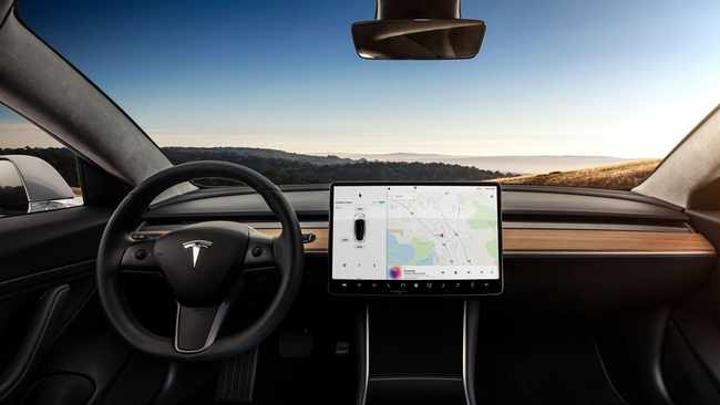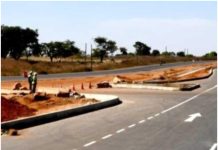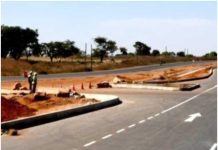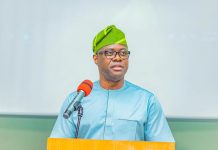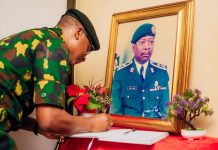Africa-Press – Nigeria. BERKELEY, CALIFORNIA – The fatal crash of a Tesla with no one apparently behind the wheel has cast a new light on the safety of semi-autonomous vehicles and the nebulous US regulatory terrain they navigate.
Police in Harris County, Texas, said a Tesla Model S smashed into a tree on Saturday at high speed after failing to negotiate a bend and burst into flames, killing one occupant found in the front passenger seat and the owner in the back seat.
Tesla Chief Executive Elon Musk tweeted on Monday that preliminary data downloaded by Tesla indicate the vehicle was not operating on Autopilot, and was not part of the carmaker’s “Full Self-Driving” (FSD) system.
Tesla’s Autopilot and FSD, as well as the growing number of similar semi-autonomous driving functions in cars made by other carmakers, present a challenge to officials responsible for motor vehicle and highway safety.
US federal road safety authority, the NHTSA, has yet to issue specific regulations or performance standards for semi-autonomous systems such as Autopilot, or fully autonomous vehicles (AVs).
There are no NHTSA rules requiring carmakers to ensure systems are used as intended or to stop drivers misusing them. The only significant federal limitation is that vehicles have steering wheels and human controls required under federal rules.
With no performance or technical standards, systems such as Autopilot inhabit a regulatory grey area.
The Texas crash follows a string of crashes involving Tesla cars being driven on Autopilot, its partially automated driving system which performs a range of functions such as helping drivers stay in lanes and steer on highways.
Tesla has also rolled out what it describes as a “beta” version of its FSD system to about 2,000 customers since October, effectively allowing them to test how well it works on public roads.
Harris County police are now seeking a search warrant for the Tesla data and said witnesses told them the victims intended to test the car’s automated driving.
No requirements
Adding to the regulatory confusion is that traditionally NHTSA regulates vehicle safety while departments of motor vehicles (DMVs) in individual states oversee drivers.
When it comes to semi-autonomous functions, it may not be apparent whether the onboard computer or the driver are controlling the car, or if the supervision is shared, says the US National Transportation Safety Board (NTSB).
California has introduced AV regulations but they only apply to cars equipped with technology that can perform the dynamic driving task without the active physical control or monitoring of a human operator, the state’s DMV told Reuters.
It said Tesla’s full self-driving system does not yet meet those standards and is considered a type of Advance Driver Assistance System that it does not regulate.
That leaves Tesla’s Autopilot and its FSD system operating in regulatory limbo in California as the carmaker rolls out new versions of the systems for its customers to test.
NHTSA, the federal body responsible for vehicle safety, said this week it has opened 28 investigations into crashes of Tesla vehicles, 24 of which remain active, and at least four, including the fatal Texas accident, occurred since March.
NHTSA has repeatedly argued that its broad authority to demand automakers recall any vehicle that poses an unreasonable safety risk is sufficient to address driver assistance systems.
So far, NHTSA has not taken any enforcement action against Tesla’s advanced driving systems.
White House spokeswoman Jen Psaki said NHTSA is “actively engaged with Tesla and local law enforcement” on the Texas crash.
The NTSB, a U.S. government agency charged with investigating road accidents, has criticized NHTSA’s hands-off approach to regulating cars with self-driving features and AVs.
“NHTSA refuses to take action for vehicles termed as having partial, or lower level, automation, and continues to wait for higher levels of automation before requiring that AV systems meet minimum national standards,” NTSB Chairman Robert Sumwalt wrote in a Feb. 1 letter to NHTSA.
“Because NHTSA has put in place no requirements, manufacturers can operate and test vehicles virtually anywhere, even if the location exceeds the AV control systems limitations,” the letter said.
NHTSA told Reuters that with a new administration in place, it was reviewing regulations around AVs and welcomed the NTSB’s input as it advanced policies on automated driving systems.
It said the most advanced vehicle technologies on sale required a fully attentive human driver at all times.
“Abusing these technologies is, at a minimum, distracted driving. Every State in the nation holds the driver responsible for the safe operation of the vehicle,” NHTSA told Reuters.
NTSB also says NHTSA does not have any method to verify whether carmakers have adopted system safeguards. For example, there are no federal regulations requiring drivers to touch the steering wheel within a specific time frame.
Reuters


